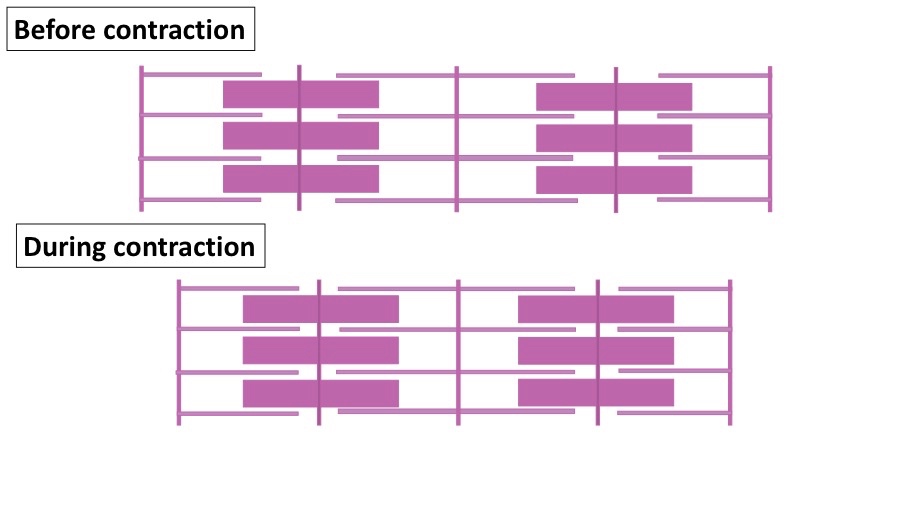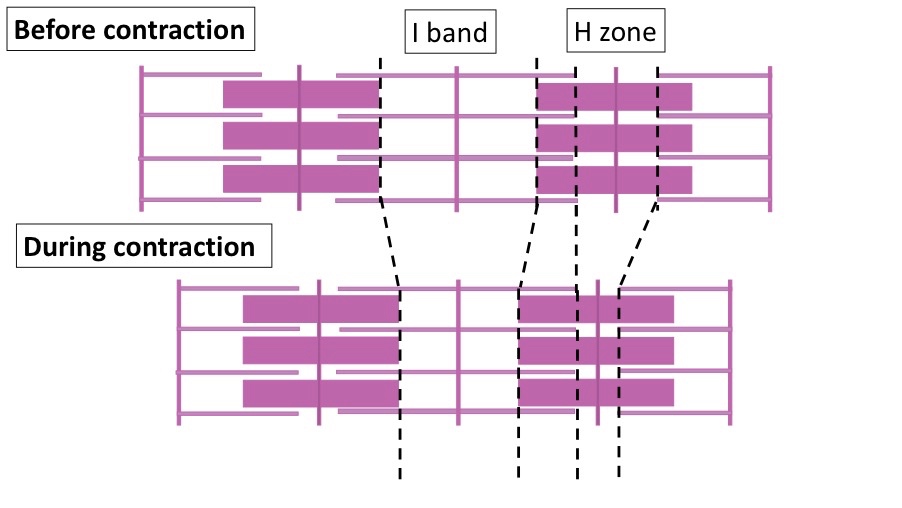Muscle/MuscleContraction/SlidingFilamentTheory
The Sliding Filament Theory
The contraction of muscle is accepted to be described by the sliding filament theory. This theory predicts that muscle contraction involves the sliding of the thin filaments along the thick filament.
This diagram shows the arrangement of the myofilaments both before and during contraction. Note that the thick filaments do not change their position in the sarcomere during contraction, instead the thin filaments “slide” over the thick filaments bringing the Z disc with them. This leads to the shortening of the sarcomere.
During contraction the I band narrows as shortening of the sarcomere brings the thick filaments from adjacent sarcomeres closer together. The H zone also narrows because there is greater overlap of the thick and thin filaments. Although not shown in the diagram the A band remains constant as the thick filament maintains its shape during contraction.
Challenge Quiz
You must wait for the CORRECT! 正確!
<GIFT> //LEVEL:2 //RAND Contraction of muscle is described by the sliding filament theory {=True~False}.
//LEVEL:2 //RAND Contraction of muscle is described by the sliding filament theory {True~=False}.
//LEVEL:2 //RAND During muscle contraction the sarcomere {widens~=narrows~remains constant}
//LEVEL:2 //RAND During muscle contraction the I band {widens~=narrows~remains constant}
//LEVEL:2 //RAND During muscle contraction the H zone {widens~=narrows~remains constant}
//LEVEL:2 //RAND During muscle contraction the A band {widens~narrows~=remains constant}

